
svetlana foote/iStock/Getty Images
Xanthan gum, pronounced like "zanthan gum," is a natural food additive produced through the fermentation of certain sugars mixed with bacteria. It can be found in desserts, convenience foods, gravies, dairy products and low-calorie foods. Xanthan gum can replace the gluten in yeast breads and other baked goods, and it can add depth to your salad dressing.
Why Xanthan Gum
Xanthan gum is an all-natural product that can add emulsive components to salad dressing, making it smoother, and keeping particles of herbs and spices evenly distributed while helping the dressing to cling well to the salad. Smooth body and viscosity are also positive results of adding xanthan gum to your home recipe.
How Much to Use
Depending on your dressing's acidity and other factors, the appropriate amount should range between .1 percent and .5 percent, meaning a little xanthan gum goes a long way, according to Editor-in-Chief Lynn A. Kuntz's article on the website Food Product Design. If you add too much, the consistency of your salad dressing will be stringy, gloppy, slippery or slick. One way bakers at Bob's Red Mill suggest measuring xanthan gum is to use 1/2 teaspoon for every 1 cup of liquid when making dressings.
Nutrition in Xanthan Gum
Nutritionally, xanthan gum is composed of carbohydrates and contains 7 grams of fiber per tablespoon. This high amount of fiber can cause bloating and flatulence, which you can generally avoid by consuming very small amounts until your system adjusts to the fiber increase. Drinking plenty of water may also help reduce problems. A diet high in fiber may aid in the absorption of minerals like calcium and iron, help manage cholesterol, stabilize blood sugar, improve your immune system and maintain a good digestive environment, according to expert on cardiovascular and brain physiology Dr. Paul Gross.
Recipes
A basic salad dressing recipe recommended by Academy of Nutrition and Dietetics involves mixing 1 part vinegar with 2 parts oil, then adding salt and pepper. To reduce fat, add water and lemon, lime, grapefruit or orange juice or a combination of water and juices until you reach 1 cup of dressing. Add 1/2 teaspoon of xanthan gum and whisk until blended. Without xanthan gum, much of the salt and pepper would remain at the bottom no matter how much mixing you did. For dressing variations, experiment with different types of vinegar, oils and herbs.
Related Articles
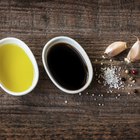
How to Mix Your Own Vinegar & Oil
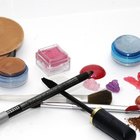
How to Make Cosmetics With Zinc Oxide ...

How to Make Homemade Liquid Rouge

How Can I Thicken My Italian Dressing?
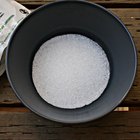
How to Make Xylitol Toothpaste
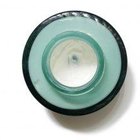
Recipes for Making Body Butters
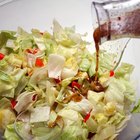
How to Store Homemade Salad Dressing

Pantene Shampoo Ingredients

How to Make Homemade Lotion With ...

Serum Vs. Gel
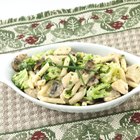
Calories in 1 Cup of Pasta Primavera
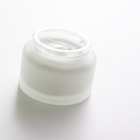
How to Make Light & Fluffy Whipped Body ...

What Is Clear Matrix Color Sync?

How to keep your face smooth and ...

The Disadvantages of Polyester Cotton

How to Make Liquid Sugar Concentrate

Can You Thicken Soup With Xanthan Gum?

How to Make a White Decorator Icing

Ingredients of Axe Body Wash

Properties of Bentonite Magmas
References
- Polymer Degradation and Stability: Properties and Applications of Xanthan Gum
- A 2 Z of Health, Beauty and Fitness: Fantastic Fibers: The Health Benefits of Fiber in the Diet
- US Code of Federal Regulations: Section 172.695: Xanthan Gum
- Food Product Design: X Is for Xanthan Gum
- What's Cooking America: Questions and Answers - What Is Zanthan Gum, Xanthan Gum and Guar Gum?
Writer Bio
Writing since 1978, Allison Stevens was writer and publisher of the Calvary Christian Fellowship newsletter and has had work appear in various online publications. Stevens has certification to teach group fitness and is a licensed Zumba instructor, teaching fitness classes for adults and children daily. She enjoys researching various subjects including health, and holds an Associate of Arts.
Photo Credits
svetlana foote/iStock/Getty Images